Provide a UI layout where I can just type my screenplay and not look at structure, timeline or even notes. Once the screenplay is written, it then makes sense to work with structure, timeline and notes.
– A consistent feedback from many early adopters of Scrite who are professional screenplay writers.
As of Scrite 0.2.18 Beta, this mode is now available. To switch to this mode, you can simply click on the toggle full screen button in the toolbar.

Using this button you can switch between the standard “Structure + Timeline + Editor” view and the new “Screenplay Only” view.
The new “Screenplay Only” view looks like this:
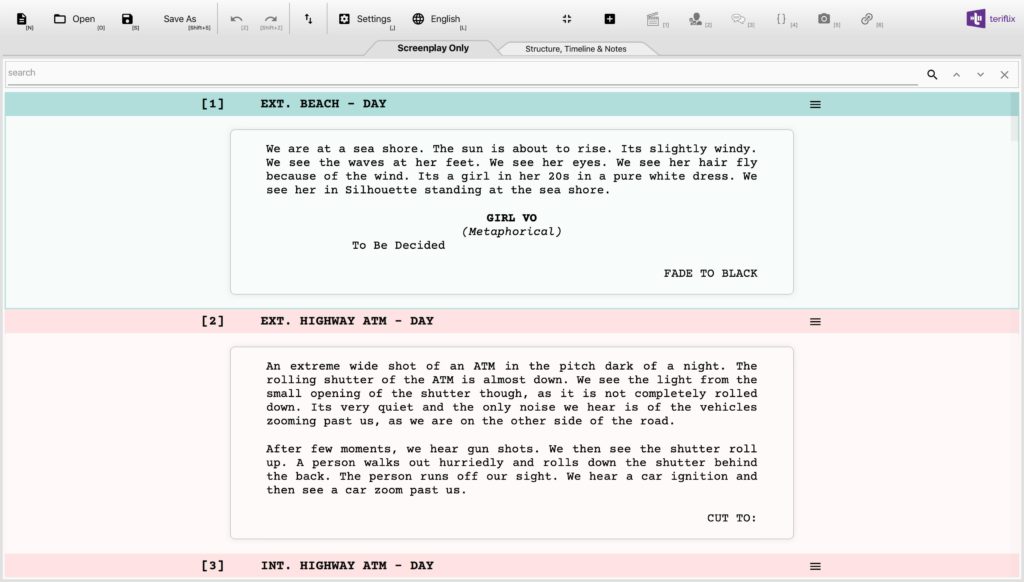
When screenplays are viewed in this mode, each scene will have a scene number displayed against it. You will also notice a hamburger button on the right hand side of the scene heading. We will talk about this button a future section on this page.
This feature was first suggested by Director Abhaya Simha. Subsequently, Directors Rohit Padaki, Adarsh Eswarappa and many early adopters of Scrite who are professional screenplay writers themselves including Sumanth, Punit and many more requested this feature. Our first international early adopter Jyothi Kalyan from San Diego had also suggested that the app should provide a UI mode where it presents a blank page to the writer, who can simply write.
Starting with a blank slate
As of Scrite 0.2.18 Beta, you can launch Scrite and switch to the full screen mode to be presented with a blank tab like this.
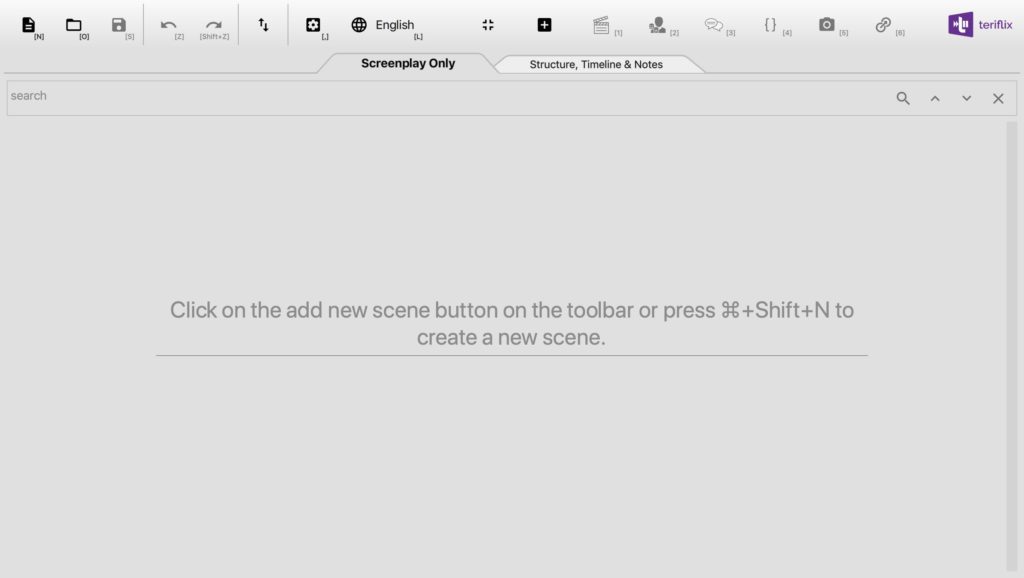
Depending on the platform in which you are using Scrite you can press Ctrl+Shift+N or ⌘+Shift+N to create a new scene.
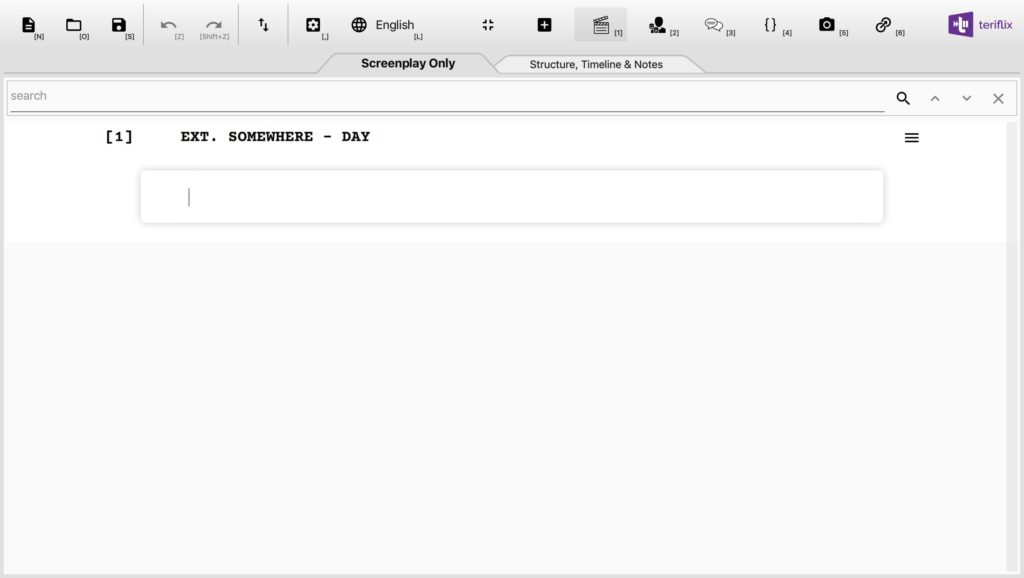
Once a new scene is created, the cursor is in the scene content area by default. The scene will have a default heading which you can always change.
Director Abhaya Simha had suggested that it would be good if the user is presented with a context menu from which he can change paragraph styles. This menu could be shown when the user hits Enter (or Return) key on a blank paragraph.
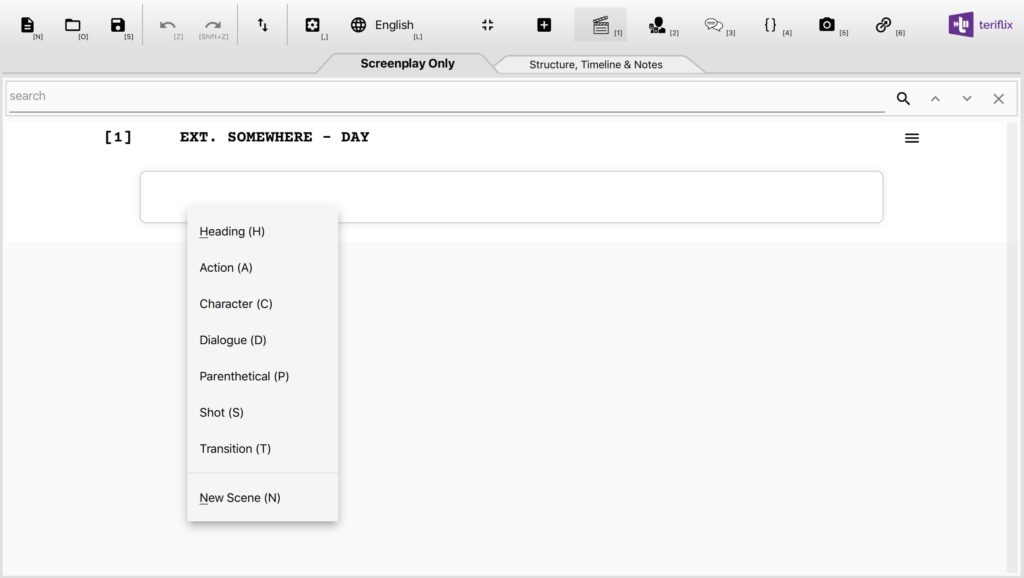
Associated with each menu option is a shortcut key. Pressing that key will activate the corresponding option. For example, pressing the H key will take the cursor to the scene heading where the user can edit the scene heading.

While you can continue to use keyboard shortcuts (Ctrl+1, 2, 3, 4..) for changing paragraph styles, the context menu is one more way to change styles.
At any time you can create a new scene by hitting Enter on a blank paragraph and selecting the New Scene menu option OR press the N key. You could also use the ⌘+Shift+N keyboard shortcut for accomplishing the same. Whenever a new scene is created, the cursor is automatically placed in the new scene.
Changing scene attributes
You can click on the hamburger icon to the right of the scene heading to get a popup menu from where you can change scene attributes.
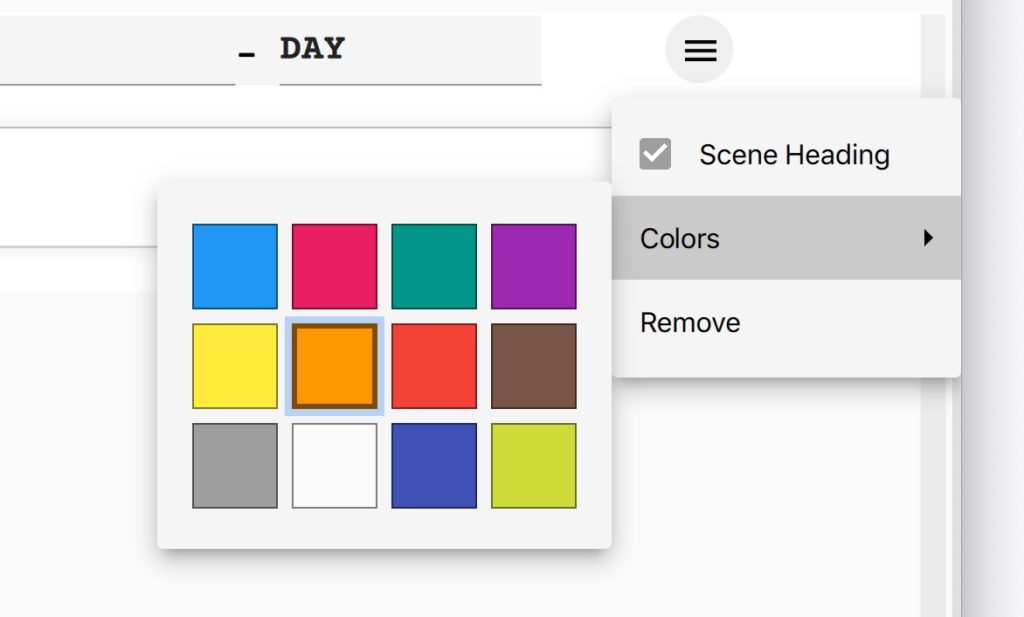
Using the options on this menu you can toggle scene heading on/off for this scene, change color for the scene or remove the scene all together.
ProTip: Removing the scene doesnt actually delete it from your Scrite project. The scene will continue to remain in structure. You can at anytime pull it back into your timeline in the future.
Structure, Timeline & Notes
It is true that we got many requests for a screenplay only view.
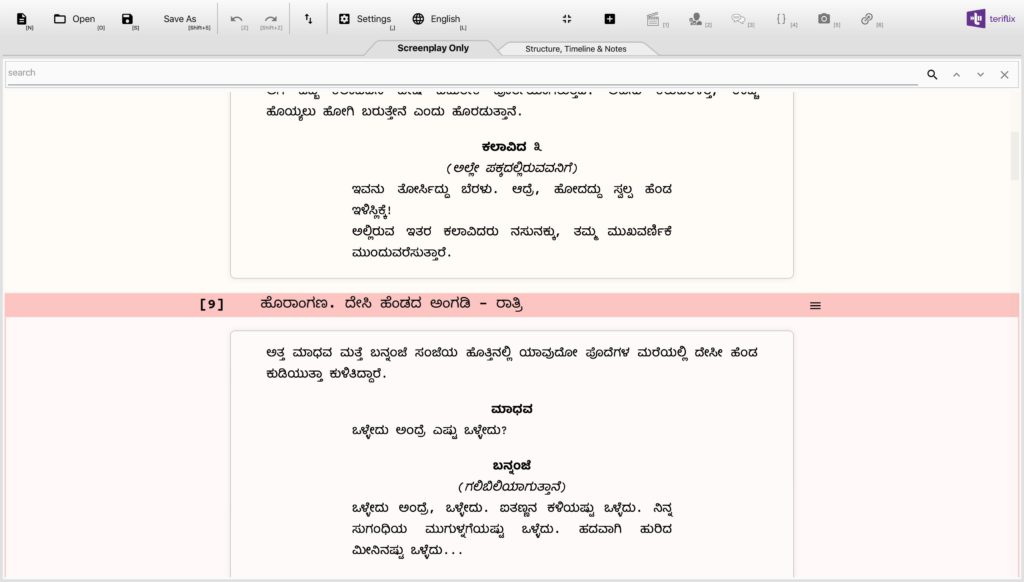
It is also true that many many users have appreciated the structure, timeline and notes feature. So, even if you are editing your screenplay in the fullscreen mode; you can always switch to the “Structure, Timeline and Notes” tab to view Structure, Timeline and Notes panels.
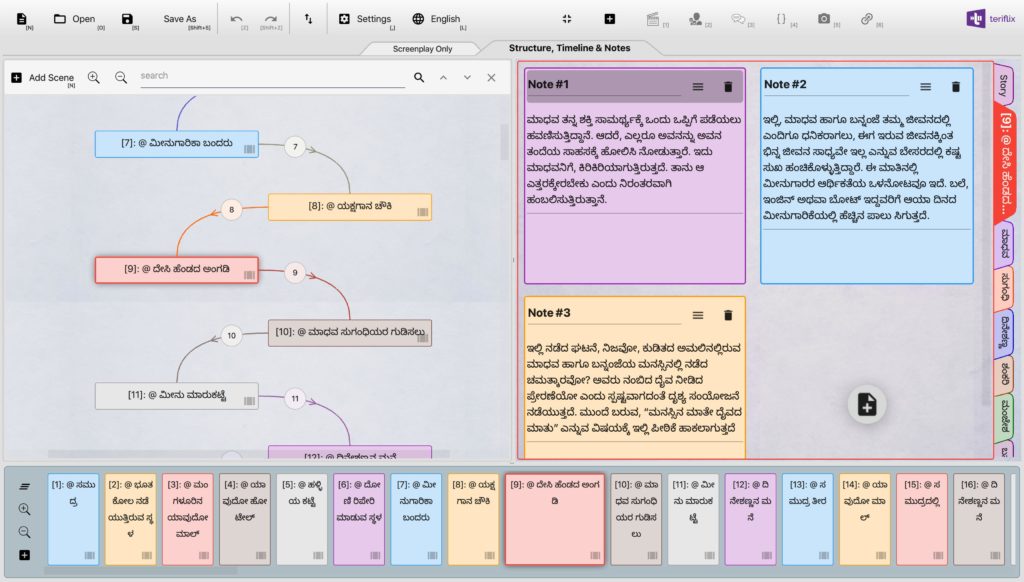
Switching to this tab allows you to view and manipulate your structure and timeline; or add notes.
Download the latest beta release of Scrite, use this feature and let us know what you think.